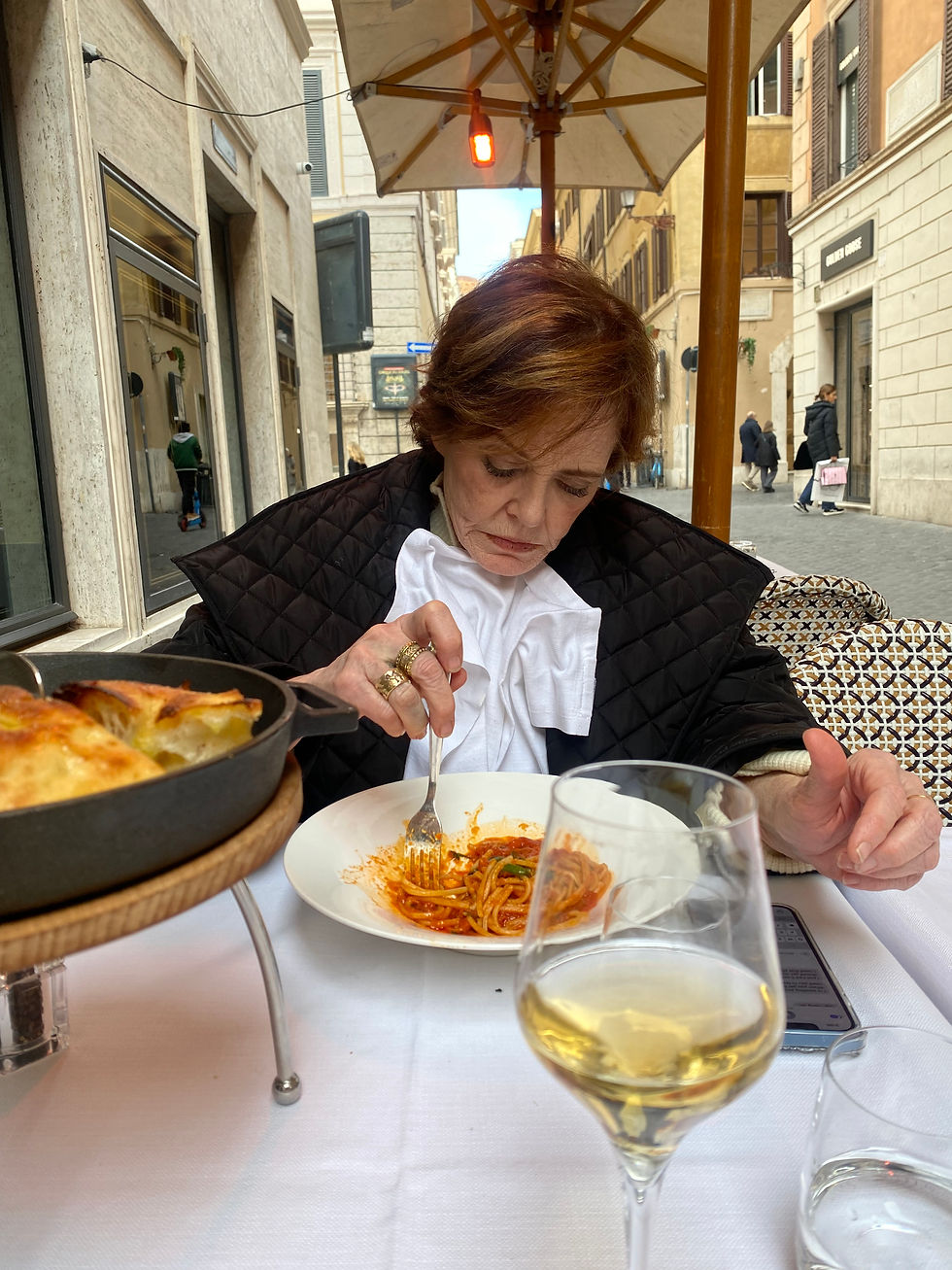Genoa: Two Tales of One City
- Kathryn Casey

- Jan 24, 2019
- 3 min read
The first and only time I visited Genoa prior to my stop there a few weeks ago, I had the distinct impression of a sinister city; positively Dickensian at the waterfront, right down to the unwholesomely reedy man with the porkpie hat tipped over one eye who was leaning against a wall smoking while rats rummaged outside a live-music bar of equally insalubrious aspect.
During that overnight stay nine years ago, I jotted the following notes:
If you’re in the mood to feel vaguely threatened, drop into Genoa for a spell.…
characters furtive, leering, menacing...like a scene of East London straight out of Bleak House…dark alleys…
Innocence of children seems out of place in this polluted atmosphere. Even the bakeries seem somehow malignant, as if there might be poison lurking in the dough.
What a contrast with pretty, happy Verona where everything seemed almost dainty and where it seemed sunny even when it rained. Here, all looks bleak and grim in bright sunlight.
Wow. Those were some harsh words for Genoa, despite the fact that I wound it all up with this O’Henry-esque epilogue: Nonetheless, I like Genoa very much. It’s interesting.
Whatever, Kath.
This go ‘round, I got a much more positive impression, thanks in part to a four-hour guided city overview. It was a reminder that sometimes a little tour to get oneself oriented to a city can make a big difference. There were still the sunless and moonless alleys suggestive of dark deeds, but this time I found a beautiful, multi-layered (literally) port city stacked tier upon tier with history and mystery and filled with regal boulevards, hidden courtyards, and frescoed facades.
There are so many obvious reasons to visit Genoa: historic port, priceless art repository, Crusades pitstop, preeminent aquarium in Europe, blah blah. For fans of what my sister would call “Catholic delights,” there are the purported remains of John the Baptist and a whopping 900 shrines to the Madonna. (With that kind of presence, you’d think she would have photo-bombed virtually every shot a person took, but it turns out I have not even one photo to illustrate this particular city feature.)
Truth to tell, though, I was there for the focaccia. The glassy, curiously chewy, liberally-salted bite of divinity that is Genovese focaccia. I would have sung my little hymn to it on-the-spot in a selfie video (the VM almost certainly not missing that occasion!) had my mouth not been perpetually stuffed with it.

Genoa is to focaccia what Naples is to pizza. In fact, I’d heard that, as with the pizza of Naples, it’s the Ligurian water that makes the difference. (When I asked my guide to confirm that, she answered that she believed it was simply a matter of folks outside Genoa, the birthplace of this prince among pani, not truly knowing how to make it. It seems to me, though, that bakers who emigrate from Genoa would carry that knowledge with them, so I’m inclining toward the water theory.)
A Tale of Two Focaccie
Having overheard a woman in a bakery line specify that she wanted the “secca,” I came to learn that there are two recognized types of focaccia: morbida (soft) and secca (dry). I’d always assumed the differences in focaccia texture were owing to the recipes and execution (and skill of the baker), in the way some brownies are moist and fudgy and others crumbly and chewy. Not quite so, as it turns out. The two types are discrete, if not always entirely well-defined and agreed-upon.
“Dry” focaccia —the term being more than a little misleading — is oily, salty, crunchy on the perimeters and chewy inside.
"Soft” focaccia lacks that crunchy surface and so lends itself to toppings like olives, tomato and oregano, zucchini, and — a Genovese signature —onion. Were I forced to choose, I'd probably choose the secca, though I'd forever regret the morbida onion version in the porn-y shot below.
Note: I’m grossly oversimplifying the categories here. Apparently, even among Genovese purveyors and customers there are strongly held opinions about what constitutes either type, and how much rise, crunch, etc. separate the two.

For those less given to the ecstasies of carbo-loading for their marathon walks through the city, below is a smattering of second-tier attractions of Genoa.
The 12th-century Porta Soprana city gate and 16th-century lighthouse:
The Cattedrale di San Lorenzo with its leviathan 15th-century organ, gorgeous marble work, and WWII missile that penetrated the cathedral but failed to detonate:

One parting note of interest: Genoa is such a vertical city that elevators and funiculars are part of the public transportation. And how's this for genius? Rooftop entrances to apartment buildings spare residents some huffing and puffing. Instead of charging up steep hills and then chugging up staircases, folks simply take the vertical mass transit "up" to their stop and use a walkway to enter their homes from above.



































After my own heart, as always, Dorothy!
Im a secca girl all the way. Love these stories— keep them coming!
morbida, though I do wonder why it's called that ! Do you end up eating so much of it, you drop dead? ;-)
Which kind??!!
Now I’m craving focaccia . . . and I know which kind!